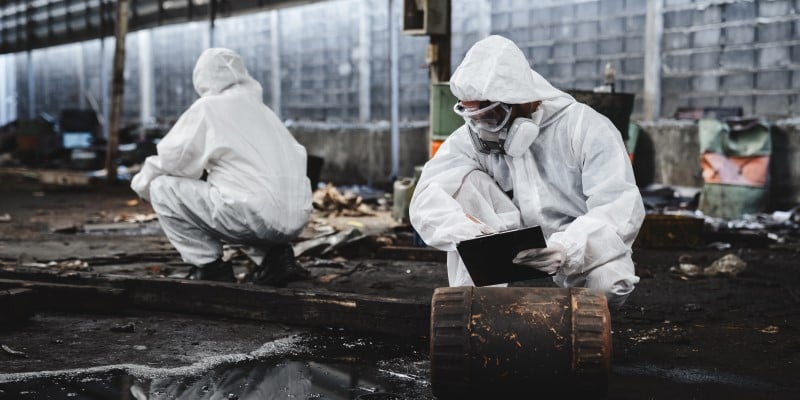 Staying up to date with the science that supports radiological defence is a key priority for CBRN practitioners, whether they are operating within a military, civilian, governmental or research capacity.
Staying up to date with the science that supports radiological defence is a key priority for CBRN practitioners, whether they are operating within a military, civilian, governmental or research capacity.
While CBRN specialists will naturally be highly skilled in the subject areas that are directly relevant to their own area of focus, there can also be much benefit to be gained from expanding their knowledge base and in exploring new technologies.
CBRN-specific training programmes can provide a useful platform for those within the wider scientific, military and civilian CBRN community to come together to share ideas, refresh their knowledge and familiarise with new developments in the provision of radiological training and equipment.
Often there can be huge value in simply revisiting the fundamentals - whether it is re examining the science of radiation release mechanisms or radiation dispersal, reviewing measurement techniques or exploring the effects of radiation on personnel, equipment and infrastructure.
Emerging radiological training technologies
There are also significant advantages in staying abreast of the new technological developments that support radiological protection.
Improvements in the capability of simulation, for example, now make it possible for CBRN practitioners to create, and participate in, highly-realistic radiological training scenarios.
Increasing numbers of military and civilian CBRN personnel are already choosing to incorporate the use of radiation simulators within their training programmes, and many are have reaped the benefits in terms of the quality of their trainees' learning experience, training efficiencies and the effectiveness of live CBRN operations.
As with most forms of simulation technology however, there will alway be certain compromises that need to be made in order to balance an organization's training objectives against what is realistically achievable.
Finding ways to practically demonstrate the real-life behaviour and characteristics of radiation in a training context is an aspect that has often posed its difficulties - and this has especially been the case when it comes to yielding realistic representations of core radiological principles such as individual radiation exposure, inverse square law or shielding.
Realism in radiological training
Equally too, it is important that the data that is produced is sufficiently realistic to enable CBRN practitioners to practice their skills in accurately identifying a radioactive source, measuring its intensity and determining its location.
Much of the challenge is down to the way in which radiation behaves, and which is directly due to the portion of the electromagnetic spectrum that it occupies.
As a result, the dynamic ranges associated with radiation readings can be very large, which can lead to problems when attempting to implement simulation.
The hands-on nature of simulator-based instruction is another key consideration.
Many existing radiological simulation methods are reliant on a high degree of instructor intervention and control which leaves the instructor less opportunity to step back, observe their trainees' responses and accurately assess their actions.
Crucially too, safety considerations will always limit what is possible when it comes to the use of even the smallest quantity of an actual radiological source.
Balancing safety with authenticity
The wellbeing of CBRN practitioners, the wider community and the environment will always take precedence over achieving specific physical representations of what occurs in reality.
But once safety, environmental and regulatory considerations have been taken into account, how can instructors provide a training experience that enables their trainees to truly trust in the functionality of their equipment and in the accuracy of the readings that their simulator detector systems provide?
This is just one of the challenges that new technologies such as the new Radiation Field Training Simulator (RaFTS) have set out to resolve.
The Radiation Field Training Simulator (RaFTS)
RaFTS represents an entirely new approach to the provision of radiological spectrometry training by utilizing operational detector equipment in a training context, but without the need for a radiological source.
In setting out to re envision the practice of radiation training, the creators of RaFTS have been guided by three key principles: the importance of training using real equipment, the value of learning through realistic training scenarios and the benefits of replicating actual operational conditions.
By enabling CBRN personnel to safely experience all of the behavioural characteristics of radiation while using their actual detectors there is the is the opportunity for an even deeper level of understanding of the fundamentals of radiological training.
If you would like to learn more about the potential of integrating RaFTS into your radiation training programmes, please contact a member of the Argon team today.







